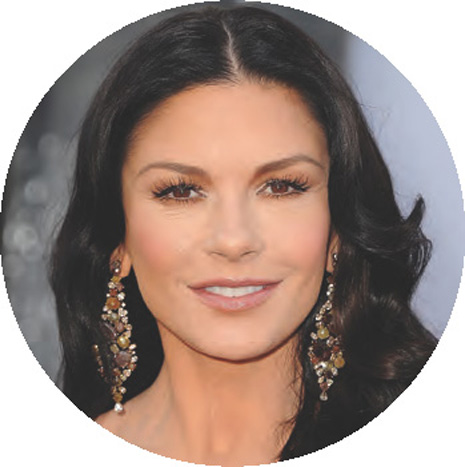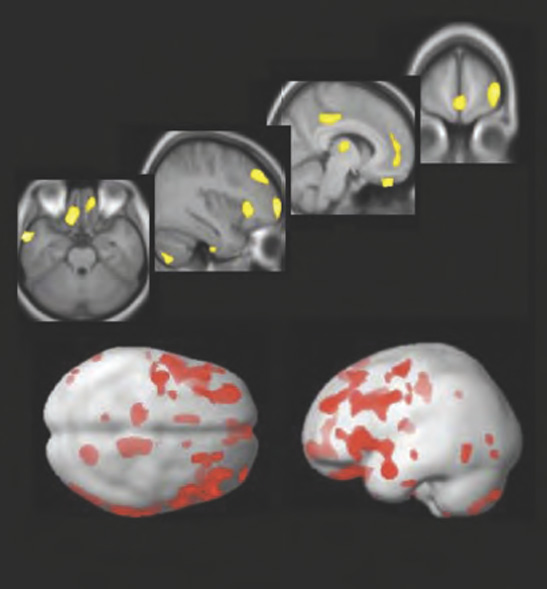13.6 Bipolar Disorders
HIGHEST HIGHS, LOWEST LOWS
 When Ross began battling bipolar disorder, he went through periods of euphoria and excitement. Sometimes he would stay awake for 4 consecutive days, or sleep barely an hour for 2 weeks in a row—without feeling the least bit tired. In fact, he was exploding with energy, supercharged with confidence, and feeling high on life. Ideas flashed through his mind so fast that it was difficult to focus on any one of them. “My brain was a television,” Ross says, “and someone was just constantly flipping channels.” The only way he could ease his mind was by drinking—and we’re not talking about a couple of beers or a few shots of vodka, but an entire case or a whole bottle. Ross was using alcohol to drown out his symptoms.
When Ross began battling bipolar disorder, he went through periods of euphoria and excitement. Sometimes he would stay awake for 4 consecutive days, or sleep barely an hour for 2 weeks in a row—without feeling the least bit tired. In fact, he was exploding with energy, supercharged with confidence, and feeling high on life. Ideas flashed through his mind so fast that it was difficult to focus on any one of them. “My brain was a television,” Ross says, “and someone was just constantly flipping channels.” The only way he could ease his mind was by drinking—and we’re not talking about a couple of beers or a few shots of vodka, but an entire case or a whole bottle. Ross was using alcohol to drown out his symptoms.
Ross: What was the hardest part of having your disorder when you were younger, and what’s the hardest part now?
DSM–5 and Bipolar Disorders
LO 7 Compare and contrast bipolar disorders and major depressive disorder.
The extreme energy, euphoria, and confidence Ross felt were most likely the result of manic episodes, also known as mania. Manic episodes are often characterized by continuous elation that is out of proportion for the situation. Other features include irritability, very high and sustained levels of energy, and an “expansive” mood, meaning the person feels more powerful than he really is and behaves in a showy or overly confident way. During one of these episodes, a person exhibits three or more of the symptoms listed below, which represent deviations from normal behavior (APA, 2013):
- grandiose or extremely high self-esteem;
- reduced sleep;
- increased talkativeness;
- a “flight of ideas” or the feeling of “racing” thoughts;
- easily distracted;
- heightened activity at school or work;
- physical agitation;
- displaying poor judgment and engaging in activities that could have serious consequences (risky sexual activities, excessive shopping sprees).
It is not unusual for a person experiencing a severe manic episode to be hospitalized. Mania is difficult to hide and can be dangerous. One may act out of character, doing things that damage important relationships or jeopardize work. A person may become violent, posing a risk to himself and others. Seeking help is unlikely, because mania leads to impaired judgment, feelings of grandiosity, and euphoria. (Why would you seek help if you feel on top of the world?) At these times, the support of others is essential.
There are various types of bipolar disorder. To be diagnosed with bipolar I disorder, a person must experience at least one manic episode, substantial distress, and great impairment. Bipolar II disorder requires at least one major depressive episode as well as a hypomanic episode. Hypomania is associated with some of the same symptoms as a manic episode, but it is not as severe and does not impair one’s ability to function (APA, 2013; TABLE 13.6).
| Bipolar Disorder | Description | Annual Prevalence |
|---|---|---|
| Bipolar I disorder | Episodes of mania that include an “abnormally, persistently elevated, expansive, or irritable mood and persistently increased activity or energy that is present for most of the day, nearly every day, for a period of at least 1 week”. This may be preceded by hypomania or depression. | 0.6% |
| Bipolar II disorder | Repeated major depressive episodes (lasting at least 2 weeks) and “at least one hypomanic episode,” which must last for a minimum of 4 days. | 0.8% |
| The two forms of bipolar disorder have distinct patterns of highs and lows. Looking at the annual prevalence (yearly occurrence) of these disorders, you can see that they are relatively rare. | ||
| SOURCE: DSM–5 (AMERICAN PSYCHIATRIC ASSOCIATION, 2013). | ||
Bipolar Cycling

Some people with bipolar disorder cycle between extreme highs and lows of emotion and energy that last for days, weeks, or even months. During bouts of mania, a person’s mood can be unusually elevated, irritable, or expansive. At the other extreme are feelings of deep sadness, emptiness, and helplessness. Periods of mania and depression may be brought on by life changes and stressors (Malkoff-Schwartz et al., 1998), though some research suggests that it is only the first episode that tends to be triggered by some sort of life event, such as a first love. Subsequent episodes do not seem to be as closely linked to such events (Belmaker, 2004).
Bipolar disorder is uncommon. Over the course of a lifetime, about 0.8% of the American population will receive a diagnosis of bipolar I disorder, and 1.1% bipolar II disorder (Merikangas et al., 2007). Men and women are equally likely to be affected, but the course of the disorder may differ according to gender. Men tend to experience earlier onset of symptoms, while the incidence for women seems to be higher later in life (Altshuler et al., 2010; Kennedy et al., 2005).
Who Gets Bipolar Disorder?

Although researchers have not determined the cause of bipolar disorders, evidence from twin and adoption studies underscores the importance of genes. If one identical twin is diagnosed with bipolar disorder, there is a 40–70% chance the other twin will have the disorder as well. Among fraternal twins, there is only a 5% chance that the second twin will develop the disorder (Craddock, O’Donovan, & Owen, 2005). According to the American Psychiatric Association (2013), “a family history of bipolar disorder is one of the strongest and most consistent risk factors for bipolar disorders”. Adults with a family member who has bipolar disorder, on average, have a “10-fold increased risk” for developing the disorder themselves.
But nature is not the only force at work in bipolar disorder; nurture seems to play an important role, too. The fact that there is a higher rate of bipolar disorder in high-income countries (1.4%) than in low-income countries (0.7%; APA, 2013) suggests that environment may act as a catalyst for its development. Some researchers hypothesize that exposure to viruses, poor nutrition, and stress during fetal development spark a cascade of biological events that leads to the development of bipolar disorder. The same has been said of another serious disorder, schizophrenia (Carter, 2007; Yolken & Torrey, 1995).
show what you know
Question 13.17
1. Ross described going for 4 days straight without sleeping at all, or 2 weeks in a row sleeping only 1 hour per night. He was exploding with energy, supercharged with confidence, and feeling on top of the world. It is likely that Ross was experiencing periods of euphoria and excitement, which can best be described as:
- depression.
- manic episodes.
- panic attacks.
- anxiety.
b. manic episodes.
Question 13.18
2. What is the difference between bipolar I disorder and bipolar II disorder?
In order to be diagnosed with bipolar I disorder, a person must experience at least one manic episode spanning a week or more. These periods of mania are characterized by increased energy and activity and unusual excitement and/or irritability. Depression and hypomania may also occur.
To be diagnosed with bipolar II disorder, a person must experience recurrent episodes of major depression lasting 2 or more weeks and at least one episode of hypomania spanning 4 or more days. Hypomania is a mild version of mania; the symptoms are similar, but not disabling.
Question 13.19
3. Compare the symptoms of bipolar disorder with those of major depressive disorder.
A diagnosis of bipolar I disorder requires that a person experience at least one manic episode, substantial distress, and great impairment. Bipolar II disorder requires at least one major depressive episode as well as a hypomanic episode, which is associated with some of the same symptoms as a manic episode, but is not as severe and does not impair one’s ability to function. People with bipolar disorder cycle between extreme highs and lows of emotion and energy that last for days, weeks, or even months. Individuals with major depressive disorder, on the other hand, tend to experience a persistent low mood, loss of energy, and feelings of worthlessness.